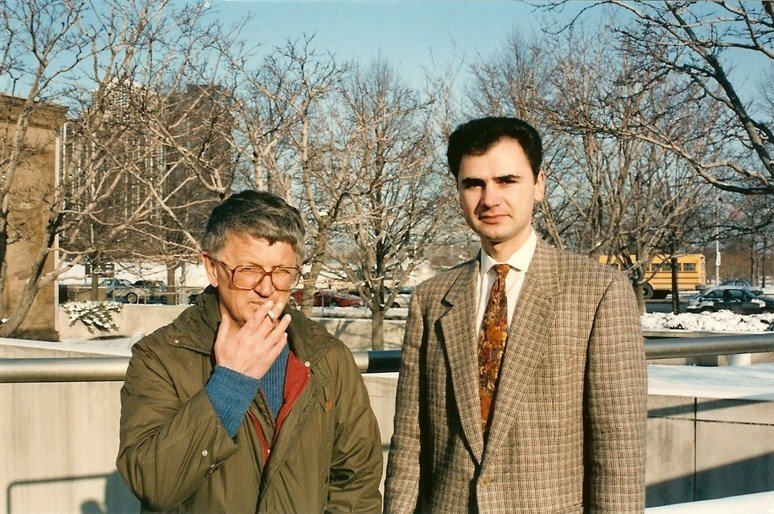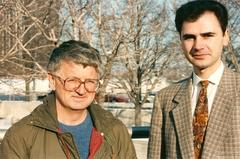
Goodman Theatre Chicago: Complete Visiting Guide, Hours, Tickets & History
Date: 14/06/2025
Introduction
Nestled in Chicago’s vibrant Loop district, the Goodman Theatre is not only the city’s oldest and largest nonprofit theater but also a cornerstone of American performing arts. Established in 1925 by William and Erna Goodman in memory of their son, Kenneth Sawyer Goodman, the theater has evolved into a nationally acclaimed institution known for artistic innovation, diversity, and community engagement. As a visitor, you’ll encounter a rich blend of history, world-class performances, accessible facilities, and a wealth of surrounding attractions, making Goodman Theatre an essential stop for anyone exploring Chicago’s cultural landscape (Goodman Theatre History; Encyclopedia of Chicago).
This comprehensive guide covers everything you need to plan your visit, from history and significance to visiting hours, ticketing, accessibility, travel tips, nearby attractions, and answers to frequently asked questions.
Contents
- Historical Overview
- Significance in American Theatre
- Visitor Information
- Visiting Hours
- Ticket Information
- Accessibility
- Getting There and Parking
- Nearby Attractions and Dining
- Special Events and Tours
- 2025–2026 Season Highlights
- Community Initiatives and Cultural Impact
- Frequently Asked Questions (FAQs)
- Summary & Final Visitor Tips
- Sources
Historical Overview
Founding and Early Years (1922–1930)
Goodman Theatre originated from the philanthropic vision of William and Erna Goodman, who donated $250,000 to the Art Institute of Chicago in 1922 to create a theater honoring their son, Kenneth Sawyer Goodman. Kenneth, a playwright who passed away during the 1918 influenza pandemic, had imagined a theater that combined professional productions with rigorous drama education. Designed by architect Howard Van Doren Shaw, the theater opened its doors in October 1925, premiering Kenneth Goodman’s own one-act plays (Goodman Theatre History; Chicago Public Library; Encyclopedia of Chicago).
The Drama School and Professional Company
From its inception, Goodman Theatre was unique for integrating a professional company with a drama school, led by Thomas Woods Stevens. This dual mission fostered a new generation of theater professionals and advanced the American theater education movement (Zippia). The Great Depression, however, forced the closure of the professional company in 1930, though the drama school continued to thrive.
Mid-20th Century: Transition and Growth
During the mid-20th century, the Goodman operated primarily as a training ground, producing student-driven performances. In the late 1950s, director John Reich began integrating professional actors, and by 1969, a fully professional company was re-established (Encyclopedia of Chicago).
Independence and Artistic Innovation (1970s–1980s)
The 1970s saw Goodman Theatre’s separation from the Art Institute and its establishment as the independent Chicago Theatre Group, Inc. Under artistic directors William Woodman and Gregory Mosher, the theater became a hub for experimental work and new voices, including the premieres of David Mamet’s American Buffalo and Glengarry Glen Ross (Goodman Theatre History).
The Robert Falls Era and National Recognition
Appointed in 1986, Robert Falls elevated Goodman’s profile with ambitious programming and award-winning revivals such as Death of a Salesman, which moved to Broadway and won four Tony Awards. In 1992, Goodman Theatre received the Regional Theatre Tony Award (Wikipedia).
Relocation and Modern Facilities (2000–Present)
Goodman Theatre moved to its current, state-of-the-art facility at 170 N. Dearborn Street in 2000, featuring the 856-seat Albert Theatre and the 350-seat Owen Theatre. The new space enabled expanded programming and community engagement, solidifying Goodman’s role as a leader in American theater (Goodman Theatre Visitor Info).
Significance in American Theatre
As Chicago’s oldest active nonprofit theater, Goodman Theatre is recognized for championing new works, fostering diversity, and launching the careers of renowned artists. It was the first theater to produce all ten of August Wilson’s American Century Cycle plays, serving as a national platform for innovative and inclusive storytelling (Choose Chicago). Goodman’s productions frequently transfer to Broadway and have received numerous Tony, Pulitzer, and Joseph Jefferson awards (Wikipedia).
Visitor Information
Visiting Hours
- Box Office: Open daily from 12:00 PM to 5:00 PM. On performance days, the box office opens two hours prior to showtime.
- Performances: Evening shows typically begin between 7:00 PM and 8:00 PM; matinees are offered on weekends and select holidays. Always check the official Goodman Theatre schedule for up-to-date times.
Ticket Information
- Purchase: Buy tickets online, by phone, or at the box office. Early booking is advised, especially for popular shows.
- Pricing: Tickets generally range from $30 to $100, with discounts for students, seniors, and groups.
- Memberships: Centennial Season memberships start at $54, offering flexible packages and member benefits.
- Group Discounts: Available for groups of 10 or more.
For ticketing, visit the Goodman Theatre Tickets page.
Accessibility
Goodman Theatre is fully ADA compliant, offering:
- Wheelchair-accessible entrances and seating
- Assistive listening devices
- Elevators and accessible restrooms
- ASL-interpreted performances and service animal accommodations
For more, see the Goodman Theatre Accessibility page.
Getting There and Parking
- Address: 170 North Dearborn Street, Chicago, IL 60601
- Public Transit: Served by all major CTA rail lines (closest: “Washington/Wells”) and multiple bus routes.
- Parking: Discounted parking is available at nearby garages with ticket validation.
Find detailed travel info at the Goodman Theatre Visitor Guide.
Nearby Attractions and Dining
The Goodman’s central location places you steps from:
- Millennium Park and Cloud Gate (“The Bean”)
- The Art Institute of Chicago
- Chicago Riverwalk
- The Chicago Cultural Center
Dining options abound, from Petterino’s (adjacent) to a variety of restaurants suiting every taste (Chicago Beautiful Guide).
Special Events and Tours
- Annual Events: “A Christmas Carol” (48th year in 2025), the New Stages Festival, and Theater for the Very Young.
- Community Programs: Free citywide performances as part of the 100 Free Acts of Theater initiative.
- Backstage Tours: Guided tours and backstage access are available for groups upon request; occasional public opportunities may be announced on the website (Loop Chicago).
2025–2026 Season Highlights
- World Premieres: Six new works, including two musicals.
- Centennial Opener: Ashland Avenue by Lee Kirk, directed by Susan V. Booth, runs September 6 – October 5, 2025.
- Annual Favorites: A Christmas Carol and Dennis Watkins’ The Magic Parlour.
- Noteworthy Revival: Harold Pinter’s Betrayal (Feb 8–Mar 16, 2025), starring Robert Sean Leonard, Helen Hunt, and Ian Barford (Clef Notes Journal).
Full season info: Goodman Theatre official season page.
Community Initiatives and Cultural Impact
- Education: The Alice Rapoport Center for Education and Engagement delivers arts programming, workshops, and residencies for youth across Chicago.
- Outreach: Goodman’s 100 Free Acts of Theater brings performances to all 50 wards in partnership with the Department of Cultural Affairs and Special Events.
- Equity and Inclusion: Collaborations with diverse companies (e.g., Definition Theatre for Fat Ham) and NEA-supported initiatives reflect Goodman’s national leadership in inclusive storytelling (WBEZ NEA Grants).
Frequently Asked Questions (FAQs)
Q: What are the visiting hours?
A: Box office is open daily from 12:00 PM to 5:00 PM; on performance days, it opens two hours before showtime.
Q: How do I buy tickets?
A: Online, by phone, or at the box office. Early purchase is recommended (Goodman Theatre Tickets).
Q: Is Goodman Theatre accessible?
A: Yes. Wheelchair access, assistive devices, and ASL-interpreted performances are available.
Q: Are discounts available?
A: Yes, for students, seniors, and groups. See the ticketing page for details.
Q: What are nearby attractions?
A: Millennium Park, the Art Institute of Chicago, Chicago Riverwalk, and many dining options.
Q: Does Goodman offer group tours?
A: Guided tours are available for groups upon request; public tours are occasionally offered.
Summary & Final Visitor Tips
Goodman Theatre is an emblem of Chicago’s cultural vitality and artistic innovation. With its storied history, commitment to diversity, accessible facilities, and central location near iconic city attractions, it offers an unparalleled theater experience. Plan your visit by consulting the official website for show times and ticketing, arrive early to explore the lively Loop neighborhood, and enhance your experience by attending talkbacks or special events.
Stay informed by following Goodman Theatre on social media and download the Audiala app for exclusive content and up-to-date notifications.
Sources
- Goodman Theatre History
- Encyclopedia of Chicago
- Goodman Theatre About
- Chicago Beautiful Guide
- Goodman Theatre Tickets
- Clef Notes Journal
- Wikipedia
- Goodman Theatre Visitor Info
- Loop Chicago
- WBEZ NEA Grants
- Chicago Plays
- Choose Chicago





























































































































































